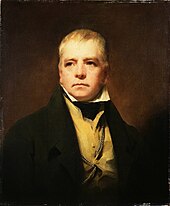
Scotland
The Scottish Reform Act 1832 increased the number of Scottish MPs and widened the franchise to include more of the middle classes. From the mid-century, there were increasing calls for Home Rule for Scotland and the post of Secretary of State for Scotland was revived. Towards the end of the century Prime Ministers of Scottish descent included William Gladstone, and the Earl of Rosebery. In the late 19th century the growing importance of the working classes was marked by Keir Hardie‘s success in the Mid Lanarkshire by-election, 1888, leading to the foundation of the Scottish Labour Party, which was absorbed into the Independent Labour Party in 1895, with Hardie as its first leader.
Glasgow became one of the largest cities in the world and known as “the Second City of the Empire” after London. After 1860 the Clydeside shipyards specialized in steamships made of iron (after 1870, made of steel), which rapidly replaced the wooden sailing vessels of both the merchant fleets and the battle fleets of the world. It became the world’s pre-eminent shipbuilding center. The industrial developments, while they brought work and wealth, were so rapid that housing, town-planning, and provision for public health did not keep pace with them, and for a time living conditions in some of the towns and cities were notoriously bad, with overcrowding, high infant mortality, and growing rates of tuberculosis.
While the Scottish Enlightenment is traditionally considered to have concluded toward the end of the 18th century, disproportionately large Scottish contributions to British science and letters continued for another 50 years or more, thanks to such figures as the physicists James Clerk Maxwell and Lord Kelvin, and the engineers and inventors James Watt and William Murdoch, whose work was critical to the technological developments of the Industrial Revolution throughout Britain. In literature, the most successful figure of the mid-19th century was Walter Scott. His first prose work, Waverley in 1814, is often called the first historical novel. It launched a highly successful career that probably more than any other helped define and popularize Scottish cultural identity. In the late 19th century, a number of Scottish-born authors achieved international reputations, such as Robert Louis Stevenson, Arthur Conan Doyle, J. M. Barrie and George MacDonald. Scotland also played a major part in the development of art and architecture. The Glasgow School, which developed in the late 19th century, and flourished in the early 20th century, produced a distinctive blend of influences including the Celtic Revival the Arts and Crafts movement, and Japonism, which found favor throughout the modern art world of continental Europe and helped define the Art Nouveau style. Proponents included architect and artist Charles Rennie Mackintosh.
This period saw a process of rehabilitation for Highland culture. In the 1820s, as part of the Romantic revival, tartan and the kilt were adopted by members of the social elite, not just in Scotland, but across Europe, prompted by the popularity of Macpherson’s Ossian cycle and then Walter Scott’s Waverley novels. However, the Highlands remained poor, the only part of mainland Britain to continue to experience recurrent famine, with a limited range of products exported out of the region, negligible industrial production, but a continued population growth that tested the subsistence agriculture. These problems, and the desire to improve agriculture and profits were the driving forces of the ongoing Highland Clearances, in which many of the population of the Highlands suffered eviction as lands were enclosed, principally so that they could be used for sheep farming. The first phase of the clearances followed patterns of agricultural change throughout Britain. The second phase was driven by overpopulation, the Highland Potato Famine and the collapse of industries that had relied on the wartime economy of the Napoleonic Wars. The population of Scotland grew steadily in the 19th century, from 1,608,000 in the census of 1801 to 2,889,000 in 1851 and 4,472,000 in 1901. Even with the development of industry, there were not enough good jobs. As a result, during the period 1841–1931, about 2 million Scots migrated to North America and Australia, and another 750,000 Scots relocated to England.
